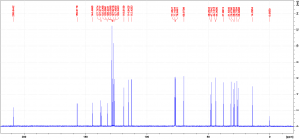If you are good at solving puzzles, then perhaps you could shine also with the qualitative analysis of organic metabolites: this is a multi-step process where you must master many separate analysis techniques
 Similarly to compound purification their characterization or identification by qualitative analysis is a prerequisite to understanding their biological functions. Luckily the evolution of chromatographic techniques hand-in-hand with mass spectrometry has enabled quite efficient characterization of different types of organic compounds even from complex mixtures.
Similarly to compound purification their characterization or identification by qualitative analysis is a prerequisite to understanding their biological functions. Luckily the evolution of chromatographic techniques hand-in-hand with mass spectrometry has enabled quite efficient characterization of different types of organic compounds even from complex mixtures.
Typically compound characterization should be started by the combination of UHPLC-DAD and UHPLC-MS instruments. There is no need to neglect UV spectra as they can be highly informative of the functional units present in the compounds of interest. Adding the molecular mass determination, will enable quite good tentative characterization of many compounds. Most often this must be accompanied with MS/MS fragmentation of the compound and by the characterization of the fragments by the accurate masses, molecular formula and double bond equivalents.
We have also invented our own specific MS/MS tools for compound classification. The group-specific analytics is the speciality of our research group. Those methods automatically pick certain compound groups for us and these can then of course double checked by the more traditional tools described above. Naturally our library of reference compounds helps in this task together with the years of experience in interpreting the UV, MS and MS/MS spectra.
 It makes sense to purify metabolites of interest, if their structures remain unresolved by the above mentioned techniques. For purification purposes gel chromatography followed by preparative and semi-preparative LC is typically sufficient to achieve pure compounds. For some of the largest compounds even these techniques are not sufficient to isolate them as individual compounds. In these special cases new methods need to be created for their purification, by e.g. centrifugal counter current chromatography.
It makes sense to purify metabolites of interest, if their structures remain unresolved by the above mentioned techniques. For purification purposes gel chromatography followed by preparative and semi-preparative LC is typically sufficient to achieve pure compounds. For some of the largest compounds even these techniques are not sufficient to isolate them as individual compounds. In these special cases new methods need to be created for their purification, by e.g. centrifugal counter current chromatography.
If and when some of the isolated structures need to be verified by the use of one- or two-dimensinal NMR techniques and by ECD, we have facilities for this task as well.
